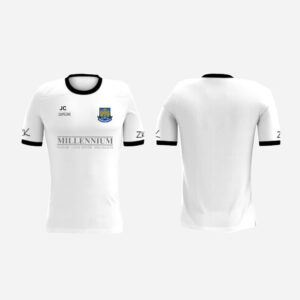The origins of the F.A. Cup date back to a competition held every year at Harrow School. The students were grouped in teams or “houses”, and they ran a football competition named “the cock house cup”. The winners were “the cock house”.
One of those players was Charles William Alcock. In 1863, Alcock was among those who got together to form the Football Association and it was he who created the idea of a F.A. members cup.
On 20 July 1871, Charles William Alcock, Secretary of the Football Association, proposed that a Challenge Cup should be established in connection with the Association for which all clubs belonging to the F.A. should be invited to compete. From this moment, the football’s first national tournament was born.
The idea was approved and 15 member clubs answered the call for entrants: Barnes, Civil Service, Clapham Rovers, Crystal Palace, Donnington School (from Lincolnshire), Hampstead Heathens, Harrow Chequers, Hitchin, Maidenhead, Marlow, Queen’s Park (from Glasgow), REIGATE PRIORY, Royal Engineers, Upton Park, Wanderers.
So, we have 14 teams from England (13 teams were settled in London) and one team from Scotland. Queen’s Park was also the first team who paid its registration. The competition was simply named “The Football Association Challenge Cup”. There was no seeding to keep the best teams apart and both sides progressed to the next round when the result was drawn.
Queen’s Park of Glasgow was automatically placed to the semi-finals because the cost of travelling to London, where games were played, was expensive. Donnington School withdrew from competition without playing any game.
In the first round, Harrow Chequers gave forfeit against Wanderers while Royal Engineers had a walk over against Reigate Priory.
In the second round, Wanderers won against Clapham Rovers (3-1), and Royal Engineers won against Hitchin (5-0).
In the quarter finals, there were only five teams instead of eight. Queen’s Park went through with a bye, Royal Engineers beat Hampstead Heathens (2-0), Wanderers and Crystal Palace were qualified after arrangement.
At least the semi finals looked correct with four teams but even then it wasn’t straightforward. Queen’s Park made the trip to London to play the Wanderers, the game ended with a draw. The F.A. ordered a replay but the Scottish team ran out of money and withdrew. The Royal Engineers went to the final after beating Crystal Palace (3-0), whose team consisted of employees of the London tourist attraction and park.
On 16 March 1872 at the Kennington Oval, the Royal Engineers were the favourites to win the first Cup final ever.
Two-thousand spectators enjoyed this historical match, standing without flags, scarves or hats declaring their club colours. The field had no markings, the goals had no nets and the crossbar was a simple length of tape. When the teams entered the field, there were no recognisable goalkeepers because they wore the same jersey as their team mates. The way of playing looked like school boys in a playground chasing the ball.
Royal Engineers set out to control the game early on but were hindered when Edmund Cresswell fell and broke his collar bone with just ten minutes gone. With no substitutes allowed the Royal Engineers were down to ten men although Cresswell did return to the game after treatment. The Wanderers took advantage of this injury, the only goal came from a gentleman described as A.H. Chequer, and in fact his real name was Morton Peto Betts. He got this nickname because he was a member of Harrow Chequers when his team gave forfeit in the first round against the Wanderers. After the final whistle there were no scenes of agony and ecstasy, there was no presentation or lap of honour. The players shook hands and left the field for a bath and their tea.
Three weeks after this day, the F.A. held a gala evening in Pall Mall and declared “the Cup” a roaring success.
The following is a list of the players:
Wanderers: R. De C. Welsh, Charles W. Alcock, Morton P. Betts, Alexander G. Bonsor, Edward E. Bowen, W. Crake, T.C. Hooman, Edgar Lubbock, Albert C. Thompson, Robert W. Vidal, Charles Wollaston
Royal Engineers: Capt. William Merriman, Capt. Francis Marindin, Lieut. Addison, Lieut. Edmund Cresswell, Lieut. Mitchell, Lieut. Renny-Tailyour, Lieut. Rich, Lieut. Alfred Goodwyn, Lieut. Muirhead, Lieut. Cotter, Lieut. Bogle
| Date | Event | Time/Results | Venue |
|---|


